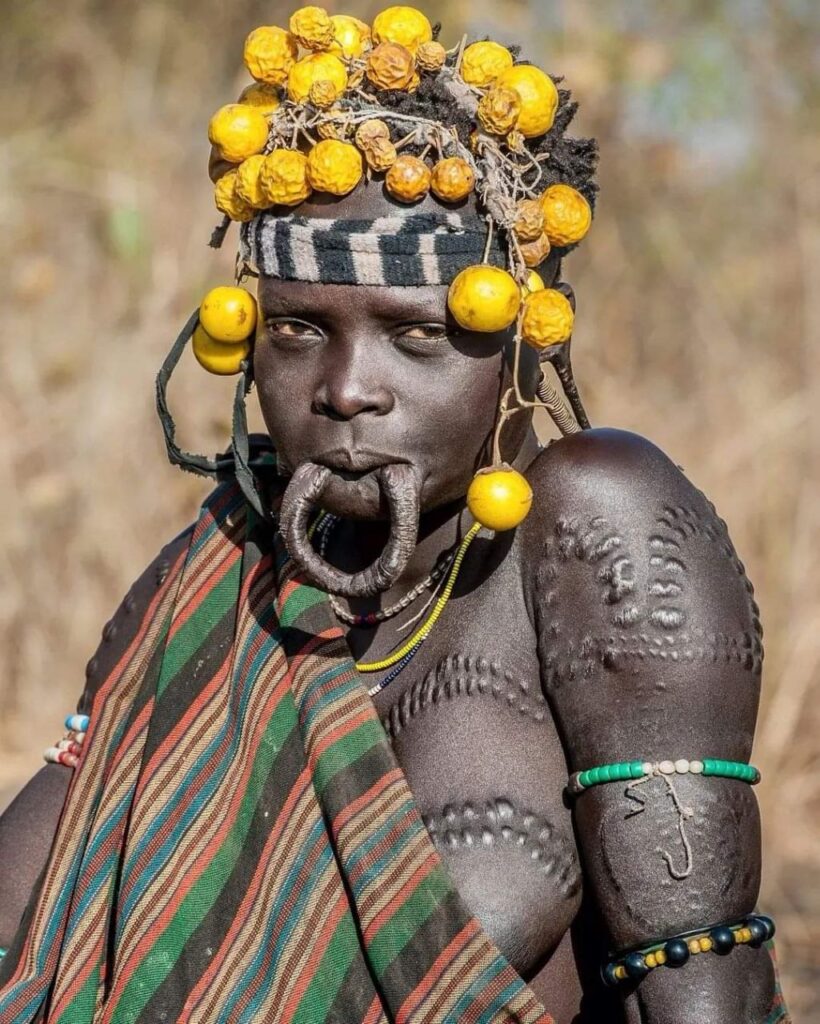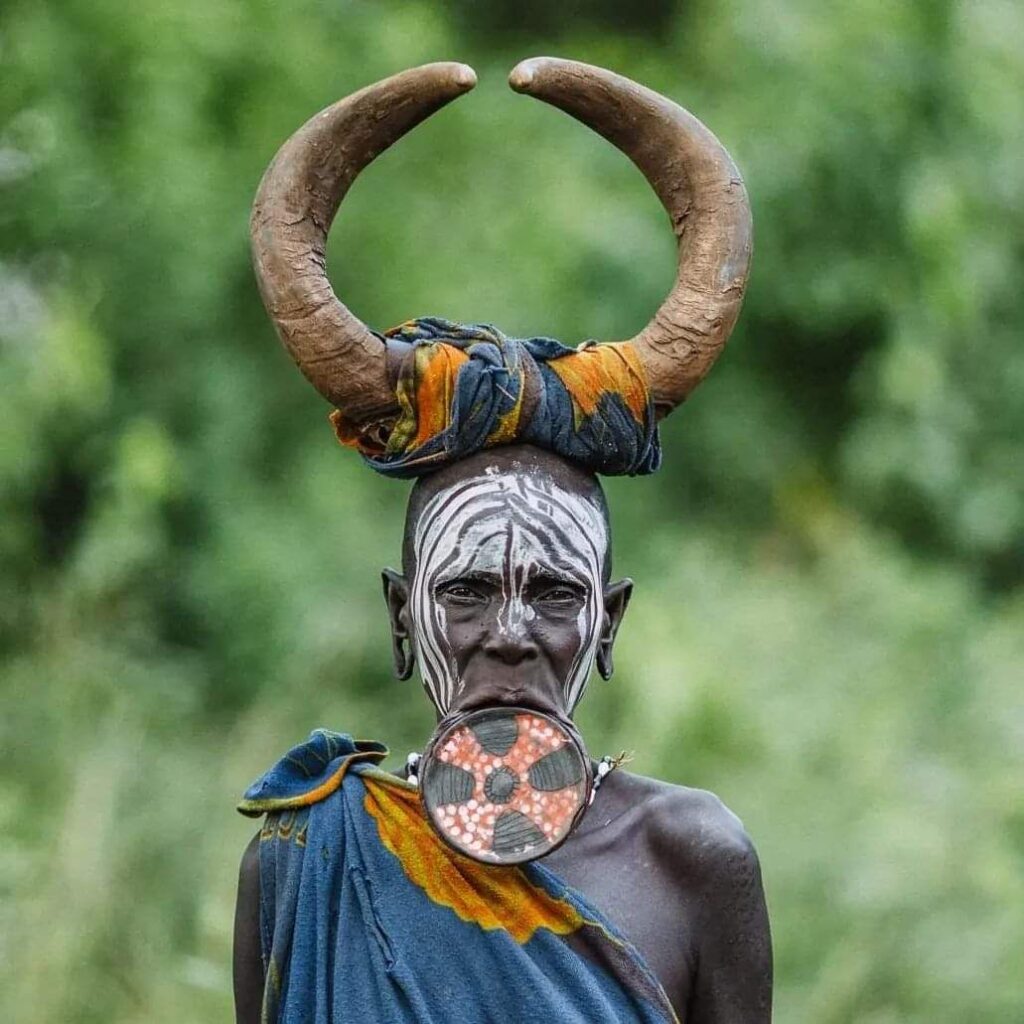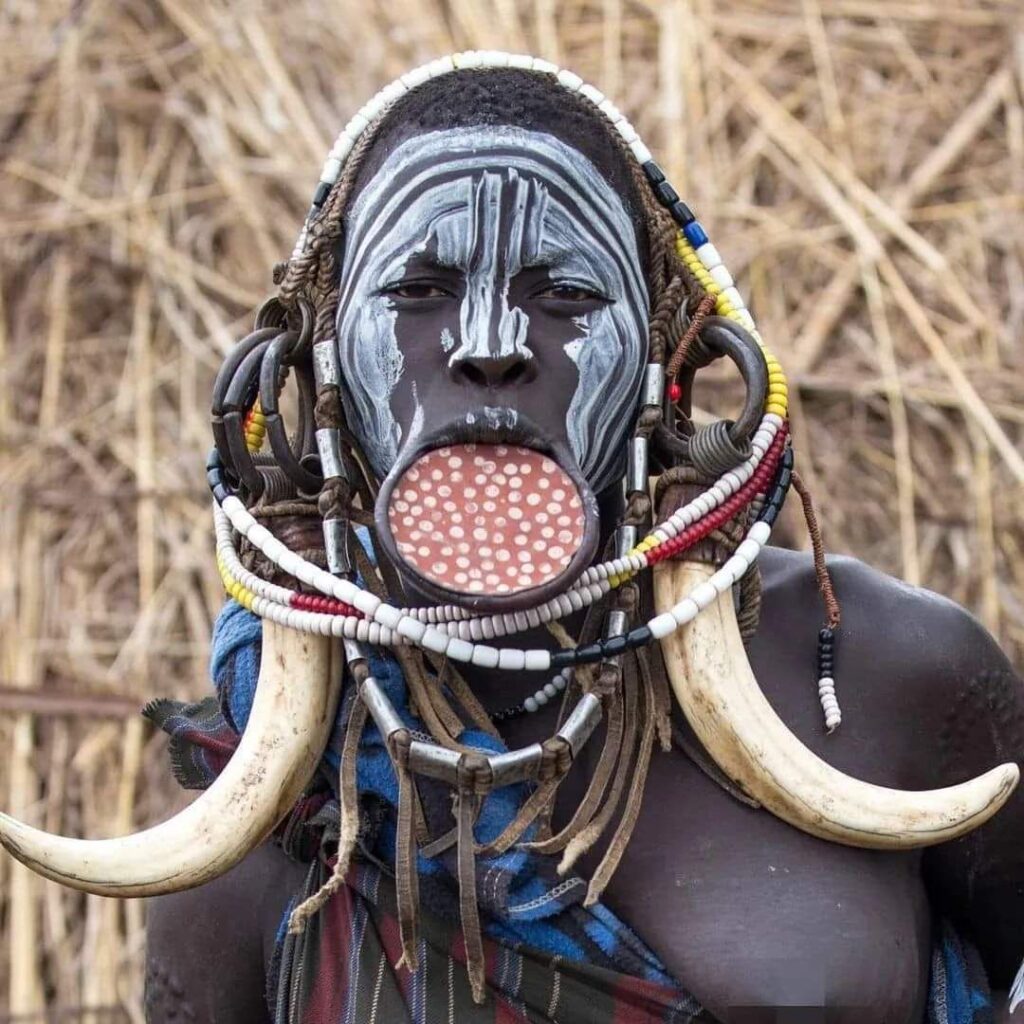The Mursi (Mun, Muni) live in the Lower Omo Valley of southwestern Ethiopia and number less than 10,000. Their territory lies in the South Omo roughly between the Rivers Omo and Mago. They speak a Surmic language belonging to the Nilo-Saharan language family. They share a common language, and frequently intermarry, with the Chai, who live west of the Omo and south of Maji.
The Mursi see themselves as the product of a series of migrations, all of which were part of a continuing effort to find and occupy a “cool place” (bha lalini), a place with riverside forest for cultivation and well-watered grassland for cattle herding. Cattle continue to make a vital contribution to their diet. But although often described as ‘nomads’ by government officials, they lead a relatively settled life and depend heavily upon cultivation. During the dry season they live mainly along the banks of the Omo. When the rains come, they return to the grasslands, east of the river, to live close to their cattle and enjoy the fresh milk.
According to many historians, the Mursi and the Suri are probably the last groups in Africa amongst whom it is still the norm for women to wear large pottery or wooden discs or ‘plates’ in their lower lips.
This lip-plate (dhebi a tugoin) is the chief visible distinguishing characteristic of the Mursi and made them a prime attraction. A girl’s lower lip is cut, by her mother or by another woman of her settlement, when she reaches the age of 15 or 16. The cut is held open by a wooden plug until the wound heals, which can take around 3 months. It appears to be up to the individual girl to decide how far to stretch the lip, by inserting progressively larger plugs over a period of several months. Some, but by no means all, girls persevere until their lips can take plates of 12 centimeters or more in diameter. Girls and boys also pierce their ears; in terms of the risk of infection, piercing and stretching of the ear lobes is of a similar risk, and since this is practiced by both sexes (albeit achieving different diameters) there is some gender equality there.
Like other forms of body decoration and alteration found the world over (like ear piercing, tattooing, and circumcision), the lip plate worn by Mursi women is best seen as an expression of social adulthood and reproductive potential. It is a kind of ‘bridge’ between the individual and society – between the biological ‘self’ and the social ‘self’.
The Mursi are a very egalitarian community in many ways, and it is the choice of the teenage girls to have their lips pierced, and not something older women or men force upon them. Obviously, like all teenagers, they feel some degree of peer pressure, but many girls marry happily without piercing their lips, even if they sometimes change their minds and decide to go ahead with the process after they have had one or two children. So, the motivations are complex.



